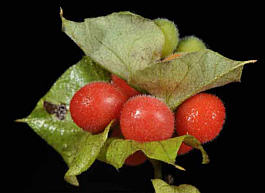|
Hepatoprotective, Analgesic, Antitumor
Hormone Balancing / Menstrual Support
Abuta
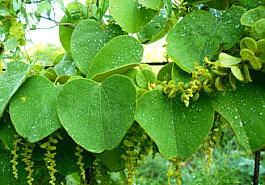
Abuta
(Cissampelos pareira)
Code BOS208
Price: $19.95
120 Capsules x 500 mg.
Order Now
 Email
Email
 Summarized Description: Summarized Description:
Abuta is a tropical, medicinal shrub found throughout the Amazonian
region of South America and in select parts tropical Asia and Africa, where
Abuta plays prominently in both Chinese and Ayurvedic medicine.
In each herbal tradition, Abuta is known for its benefits for a wide
variety of "woman's issues." Midwives throughout South America use the
vine or root to "prevent a threatened miscarriage and to stop uterine
hemorrhages after childbirth." (1)
 Other important properties include:
stops or mitigates bleeding, analgesic, antiinflammatory, lowers blood pressure,
is hepatoprotective, prevents convulsions, and balances hormones. Other
common names include Velvetleaf, Akanadi, Barbasco, Pejuco Petillo, among
many others. (2)
Uses & Protocols
 Abuta is normally taken either via capsules,
tincture, or orally (capsule/tablet). The recommended dosage is 1-2 grams, two or
three times per day.
Warnings & Contraindications
 Abuta should not be consumed beyond the recommended dosage.
Taken to excess, it is -- much like bloodroot -- quite toxic . . . although it has been used
as an antidote to other poisons (HHD). (3)
Shelf-Life
 Five years or more.
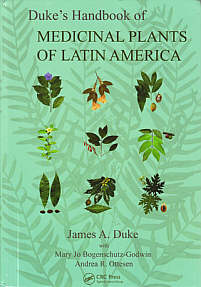
Medicinal Activities
 Further information for practitioners: Further information for practitioners:
World-famous botanist Dr. James Duke attributes the following activities
to this plant (p. 214-217; see hardcopy cover at right,
purchasable on Amazon),
drawn from the extant literature. (See his graduation for "level of
efficacy" on our amazon traditionals page;
followed by Duke's bibliographic abbreviations (in capital letters),
which we identify
on a separate page.)
 Duke provides a " food farmacy potential" score for this
plant of "FNFF=?."
- Alexiteric (f; DEP; KAB)
- Analgesic (f1; DAV, EGG; GMJ; KAB, RAI; X17240096)
- Antiabortive (f;IED)
- Antiarthritic (1; X17240096)
- Anticancer (f; JFM)
- Anticonvulsant (1; RAI; TRA)
- Antidiarrheal (1; X15050042)
- Antidote (f; ADP; RAI)
- Antiecbolic (f; DAW)
- Antiedemic (1; X17097249)
- Antifertility (1; X17324540)
- Antihistaminic (1; TRA; X17097249)
- Antiinflammatory (1; DAV; EGG; RAI; X17097249)
- Antileukemic (1; WO3; X8403094)
- Antilithic (f; WO2)
- Antimalarial (1; TRA)
- Antioxidant (1; RAI)
- Antiplasmodial (1; TRA)
- Antiradicular (1; RAI)
- Antiseptic (f; NPM)
- Antispasmodic (1; HHB; WO3)
- Antitrypanosomic (1; X12943789)
- Antiulcer (1; RAI)
- Aphrodisiac (f; RAI)
- Astringent (f1; DEP; X15050042)
- Bactericide (1; HDN; TRA; WO2)
- Bitter (f; DEP)
- Bradycardiac (1; TRA)
- Cardiotonic (1; TRA)
- CNS-Depressant (1; TRA; WO2)
- Contraceptive (1; X17324540)
- Curare (1; KAP; TRA; WO2)
- Cytotoxic (1; MPB; WO3)
- Depurative (1; KAP)
- Diaphoretic (f; IED)
- Diuretic (f; DAV; DAW; DEP; NPM; RAI)
- Emmenagogue (f; DAW; IED; KAB; WO2)
- Expectorant (f; DAV; DAW; EGG; IED; KAB; RAI)
- Febrifuge (f1; DAV; EGG; IED; KAB)
- Gram(+)icide (1; WO2)
- Hemostat (f; IED; RAI)
- Hepatoprotective (f; RAI)
- Hypertensive (1; TRA)
- Litholytic (f; DAW; DEP; IED; KAP)
- Mucolytic (f; RAI)
- Myorelaxant (1; KAP; MPI)
- Piscicide (f; DAV; IED; IHB)
- Poison (f; DAV)
- Purgative (f; DAW)
- Respirodepressant (f; DEP)
- Stimulant (f; DAW)
- Stomachic (f; DEP; KAB)
- Styptic (f; DAW)
- Tonic (f; DEP; NPM)
- Uterorelaxant (1; TRA)
- Vulnerary (f; DEP)
Indications
 Further information for practitioners: Further information for practitioners:
Duke provides the following indications for this plant:
- Abortion (f; RAI)
- Abscesses (f; 1HB; WO2)
- Acne (1; DAW; KAB, RAI, SKJ, WO2)
- Allergies (1; TRA; X17097249)
- Amenorrhea (f; KAB; WO2)
- Anemia (f; RAI)
- Arthritis (1; X17240096)
- Asthma (f; DAW; DEP; IED; JFM)
- Bacillus (1; HDN)
- Bacteria (1; HDN; TRA; WO2)
- Bites (f; SKJ)
- Bleeding (f; DAW; IED; RAI)
- Boils (f; DAW; JFM; WO2)
- Bronchitis (f; DAW)
- Bruises (f; RAI)
- Burns (f; DAW; WO2)
- Calculus (f; ADP; DAW; KAB; MAX; WO2)
- Cancer (f1; JFM; WO3)
- Cancer, colon (1; RAI)
- Candida (1; HDN)
- Carbuncles (f; DAW; SKJ)
- Cardiopathy (f1; ADP; JFM; RAI; TRA; WO2)
- Catarrh (f; DEP)
- Childbirth (f; JFM; KAB; RAI)
- Chills (f; DAW)
- Cholera (f; DAW)
- Colds (f; ADP; DAW)
- Colic (f; ADP; DAW; JFM; NPM; RAI)
- Congestion (f; RAI)
- Conjunctivosis (f; RAI)
- Constipation (f;NPM; RAI)
- Consumption (f; DEP)
- Convulsions (f1; DAW; RAI; TRA)
- Coughs (f; DAW, KAB)
- Cramps (f1; HHB; RAI, WO3)
- Cystosis (f; DAW; DEP; KAB; MAX; WOI)
- Delirium (f; DAW; SKJ)
- Dermatosis (f; IED; KAP; NPM)
- Diabetes (f; DAW)
- Diarrhea (f1; DAW; DEP; KAB; X15050042)
- Diphtheria (f; ADP)
- Dislocation (f; NPM)
- Dog Bites (f; DAW)
- Dropsy (f; DAW; DEP; KAB; MAX)
- Dysentery (f; ADP; DAW; DEP; JFM)
- Dysmenorrhea (f1; MPB; RAI; WO3)
- Dyspepsia (f; ADP; AHL; DAW; DEP; KAB; NPM)
- Dysuria (f; DAW; KAB)
- Edema (1; X17097249)
- Enterosis (f; DEP; KAB)
- Epilepsy (f; DAW; SKJ)
- Erysipelas (f; AHL; DAW)
- Escherichia (1; TRA)
- Fever (f1; ADP; DAV; DAW; EGG; IED; KAB; NPM; RAI)
- Fibroids (f; RAI)
- Gallstones (f; AHL)
- Gastrosis (f; DEP; NPM; RAI; TRA)
- Gingivosis (f; NPM)
- Gonorrhea (f; NPM)
- Gravel (f; DAW; KAB; SKJ)
- Headache (f; ADP)
- Hematuria (f; DAW; SKJ)
- Hemicrania (f; KAB)
- Hemmorrhage (1; DAW)
- Hemorrhoids (f; KAB; SKJ)
- Hepatosis (f; DAW; SKJ)
- High Blood Pressure (f1; DAW; TRA)
- Impotence (f; RAI)
- Infection (f1; HDN; NPM; TRA; WO2)
- Inflammation (f1; DAV; EGG; KAP; RAI; X17097249)
- Itch (f; ADP; DAW; WOI)
- Jaundice (f; DAW; DEP; MAX)
- Klebsiella (1; RAI)
- Leprosy (f; SKJ)
- Leukemia (1; WO3; X8403094)
- Leukorrhea (f; DAW; JFM; MAX)
- Low Blood Pressure (1; TRA)
- Malaria (f1; ADP; DAW; RAI; SKJ; TRA)
- Menorrhagia (f; DAW; RAI)
- Miscarriage (f; WO3)
- Mucososis (f; MPI; RAI)
- Myosis (f; RAI)
- Nephrosis (f; DAW; DEP; KAB; MAX; RAI; WO2)
- Nervousness (f; RAI)
- Oliguria (f; RAI)
- Ophthalmia (f; ADP; SKJ; WO2)
- Orchosis (f; AHL; DAW; RAI)
- Osteosis (f; NPM)
- Pain (f1; DAV; DEP; EGG; GMJ; KAB; NPM; RAI; WOI; X17240096)
- Palpitations (f; DAW; JFM; PMS; RAI)
- Prolapse (f; ADP; DEP)
- Puerperium (1; WO3)
- Rabies (f; DAW; SKJ)
- Rashes (f; IED)
- Respirosis (f; RAI)
- Rheumatism (f; DAW; MAX; RAI)
- Salmonella (1; RAI)
- Scabies (f; WO2)
- Sinusosis (f; DEP)
- Smallpox (f; ADP)
- Snake Bite (f; DAV; DAW; IHB; KAB; MAX; NPM)
- Sores (f; DEP; WOI)
- Spermatorrhea (f; ADP)
- Splenosis (f; JFM)
- Staphylococcus (1; HDN; TRA)
- Sterility (f; RAI)
- Stings (f; DEP; KAB)
- Stomachache (f; DEP; SKJ)
- Stones (f; DAW; DEP; IED; KAP; NAD; RAI)
- Stroke (f; SKJ)
- Swelling (f1; NPM; X17097249)
- Syphilis (f; KAP)
- Trypanosoma (1; X12943789)
- Tuberculosis (f; DEP)
- Typhoid (f; ADP)
- Ulcers (f1; DEP; NPM; RAI)
- Urethrosis (f; KAB)
- Urogenitosis (f; DAW; KAB; NAD)
- Uterosis (f; ADP; DEP; WO2)
- Vaginosis (f; RAI)
- Veneral Disease (f; DAV: DAW; EGG; IED; KAP; NPM)
- Worms (f; KAB)
- Wounds (f; ADP; DAW; DEP; NPM)
- Yeast (1; HDN)
Footnotes
- Taylor, Leslie, The Healing Power of Rainforest Herbs, Square One Publishers, 2005, p. 152-153.
- Duke, James A., Medicinal Plants of Latin America, CRC Press, 2009, p. 214.
|
 To U.S. Users: To U.S. Users: This product
have not been evaluated by the U.S. Food & Drug Administration.
It is not intended to diagnose, treat, cure, or prevent any disease.
|
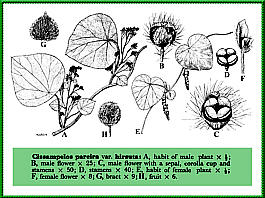
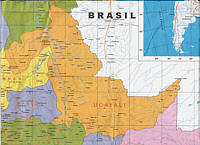 Sourcing From
Sourcing From
The Peruvian
Amazon
 Abuta is native to Southeast Asia and
parts of South America. It is prominent in both ayurvedic and Chinese
herbal traditions. We source our variety of Abuta from the Peruvian Amazon.
 Recent Studies on Abuta
Recent Studies on Abuta
Sourced from PubMed
 Disclaimer: Disclaimer: The following citations provide findings on the
properties of Abuta and offer insights into prospective areas of future research.
These findings should not be inferred to provide the basis of medicinal claims,
nor should they be relied upon by the public, as such. Readers who want full access to
the PubMed database are encouraged to
register with NCBI.
 As of Jan. 2017, there were
38 citations on PubMed for Abuta. Below are list a few of the more notable:
- Anticancer activity of cissampelos pareira
against dalton's lymphoma ascites bearing mice.
(2014) CONCLUSION: This study demonstrated that C. pariera exhibited significant in vitro and in vivo
anti-tumor activities and that it was reasonably imputable to its increasing endogenous mechanism of antioxidant property.
- From arrow poison to herbal medicine -- the ethnobotanical,
phytochemical and pharmacological significance of Cissampelos (Menispermaceae).
(2014) RESULTS: The literature revealed that pharmacological activity including analgesic and antipyretic,
anti-inflammatory, anti-allergic, bronchodilator, immunomodulatory, memory-enhancing, antidepressant, neuroprotective,
antimicrobial, antimalarial, antiparasitic, anti-ulcer, anticancer, anti-oxidant, cardiovascular, muscle-relaxant,
hepatoprotective, antidiabetic, antidiarrhoeal, antifertility, and antivenom activity have been confirmed in vitro and/or
in vivo for various Cissampelos species. Cissampelos pareira L. and Cissampelos sympodialis Eichl. are the most explored
species of this genus and the smallest number of studies have been conducted on Cissampelos laxiflora Moldenke and
Cissampelos tenuipes Engl. Many alkaloids isolated from Cissampelos such as warifteine, methylwarifteine, berberine,
hayatin and hayatidin showed promising anti-allergic, immunosuppressive, antidepressant, anticancer, vasodilatory and
muscle-relaxant activities. CONCLUSION: The plants of this genus are used in traditional medicine for the
treatment of various ailments. These plants are a rich source of bioactive bisbenzylisoquinoline and aporphine alkaloids
together with other minor constituents. Although these plants are reputable and revered in various traditional medicine systems,
many have not yet been screened chemically or pharmacologically and so there is a vast amount of research still to be conducted
to validate their traditional use.
- Effect of Cissampelos Pareira Leaves on Anxiety-like Behavior in Experimental Animals.
(2013)
- Evaluation of Safety and Protective Effect of Combined Extract
of Cissampelos pareira and Anethum graveolens (PM52) against Age-Related Cognitive Impairment.
(2012) Abstract: The present study aimed to determine acute toxicity, the protective effect, and underlying mechanism of PM52,
a combined extract of Cissampelos pareira and Anethum graveolens, against age-related cognitive impairment in animal model of age-related
cognitive impairment. PM52 was determined as acute toxicity according to OECD guideline. Male Wistar rats, weighing 180-220g, were orally
given PM52 at doses of 2, 10, and 50 mg/kg at a period of 14 days before and 7 days after the bilateral administration of AF64A via
intracerebroventricular route. All animals were assessed according to spatial memory, neuron density, MDA level, the activities of SOD,
CAT, GSH-Px, and AChEI effect in hippocampus. It was found that all doses of PM52 could attenuate memory impairment and neurodegeneration
in hippocampus. The possible mechanisms might occur via the suppression of AChE and the decreased oxidative stress in hippocampus.
Therefore, our data suggest that PM52 may serve as food supplement to protect against age-related cognitive impairment such as mild
cognitive impairment (MCI) and early phase of Alzheimer's disease. However, further researches are still essential.
- In vitro and in vivo hepatoprotective activity of
Cissampelos pareira against carbon-tetrachloride induced hepatic damage.
(2011) ABSTRACT: Administration of hydroalcoholic extract of Cissampelos pareira roots (CPRE) and standard drug silymarin
in rats showed significant hepatoprotective action against CCl4 induced hepatotoxicity. Elevated serum marker enzymes of AST, ALT, ALP
and serum bilirubin were significantly reduced to near normal level in CPRE treated rats. Lipid peroxidation level was decreased
significantly in CPRE 100, 200, 400 mg/kg doses treatment groups. In case of antioxidant enzymes SOD, catalase levels were increased
significantly after CPRE 200, 400 mg/kg doses, similarly it increased the enzyme levels of GST, GPx, and GSH. CPRE 200, 400 mg/kg decreased
cholesterol level, and increased triglyceride level. In vitro hepatoprotective activity of the extract was evaluated at 20, 40, 60, 80
and 100 microg/ml concentration against CCl4 (1%) induced toxicity in freshly isolated rat hepatocytes. HepG2 cells showed significant
dose dependent increase in percentage viability at the doses 20, 40, 60, 80 and 100 microg/ml of CPRE compared to CCl4 exposed HepG2 cells.
Results of this study strongly demonstrate Cissampelos pariera having good hepatoprotective potential.
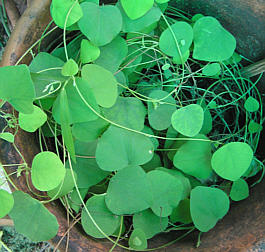
- Antioxidant and immunomodulatory activity
of the alkaloidal fraction of Cissampelos pareira linn.
(2010) ABSTRACT: The alkaloidal fraction (AFCP) of roots of Cissampelos pareira Linn. was screened for in-vitro
antioxidant activity and immunomodulatory activity in mice. The HPTLC finger print profile was also established for the
identification of AFCP which was found to contain 0.176 % of berberine. AFCP possess strong antioxidant activity which
was revealed by its ability to scavenge the stable free radical DPPH, superoxide ion and to inhibit lipid peroxidation
in rat liver homogenate induced by iron/ADP/Ascorbate complex. AFCP was found to have significant immunosuppressive
activity at lower doses (25 and 50 mg/kg) while no activity was observed at higher doses (75 and 100 mg/kg).
Humoral antibody titre was significantly (p<0.01) lowered by AFCP at the doses of 25 and 50 mg/kg. Delayed type
hypersensitivity response was also significantly (p<0.01) suppressed by the AFCP at the dose of 75 mg/kg. Thus the
present study revealed the immunosuppressive and antioxidant activities of the alkaloidal fraction of C. pareira roots.
- Tumor inhibitors. VI. Cissampareine, new cytotoxic
alkaloid from Cissampelos pareira. Cytotoxicity of bisbenzylisoquinoline alkaloids.
(1965)
- A preliminary note on the pharmacological action of the
total alkaloids isolated from Cissampelos pareira Linn. (false Pareira brava).
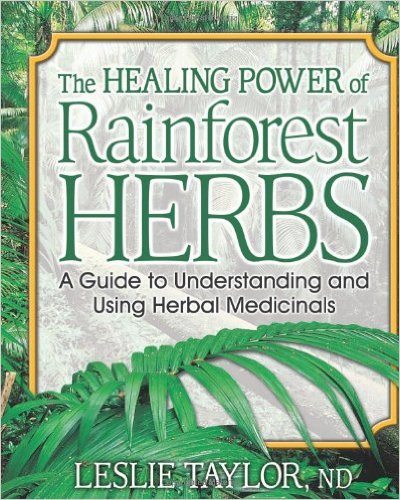
 Extensive information about
Abuta is covered on the Raintree Forest website.
Even better, you can purchase Leslie Taylor's excellent reference book,
The Healing Power
of Rainforest Herbs: A Guide to Understanding and Using Herbal Medicinals at Amazon.
 See also
description in Wikipedia.
|



 Recent Studies on Abuta
Recent Studies on Abuta
